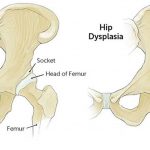
Contents
- 1 Side Effects of Clarinex (desloratadine)
Side Effects of Clarinex (desloratadine)
Clarinex (desloratadine) is a long-acting antihistamine used to treat allergies and hives (chronic urticaria) in adults and children 12 years and older.
Histamine is a chemical responsible for allergic reactions, causing symptoms such as nasal swelling, sneezing, and itchy eyes. Clarinex blocks histamine receptors, preventing activation of cells by histamine.
Common side effects of Clarinex include:
Clarinex may interact with ketoconazole, erythromycin, azithromycin, fluoxetine, and cimetidine, increasing blood levels of the drug.
Clarinex has not been studied in pregnant women, and caution should be exercised when used by breastfeeding women.
What are the important side effects of Clarinex (desloratadine)?
The most common side effects of desloratadine are:
Clarinex (desloratadine) side effects list for healthcare professionals
The following adverse reactions are discussed in greater detail in other sections of the label:
- Hypersensitivity reactions.
Clinical Trials Experience
Clinical trials have varying conditions, so adverse reaction rates observed in one trial may not reflect those in another or in clinical practice.
Adults And Adolescents
Allergic Rhinitis
- In multiple-dose placebo-controlled trials, 2834 patients ages 12 years or older received Clarinex Tablets at doses of 2.5 mg to 20 mg daily, 1655 of whom received the recommended daily dose of 5 mg.
- Patients receiving 5 mg daily had similar rates of adverse events compared to placebo-treated patients.
- The percent of patients who withdrew prematurely due to adverse events was 2.4% in the Clarinex group and 2.6% in the placebo group.
- No serious adverse events occurred in patients receiving desloratadine.
- All adverse events reported by ≥2% of patients who received the recommended daily dose of Clarinex Tablets (5 mg once daily), and more common with Clarinex Tablets than placebo, are listed in Table 1.
Table 1: Incidence of Adverse Events Reported by ≥2% of Adult and Adolescent Allergic Rhinitis Patients Receiving Clarinex Tablets
| Adverse Event | Clarinex Tablets 5 mg (n=1655) |
Placebo (n=1652) |
| Infections and Infestations | ||
| Pharyngitis | 4.1% | 2.0% |
| Nervous System Disorders | ||
| Somnolence | 2.1% | 1.8% |
| Gastrointestinal Disorders | ||
| Dry Mouth | 3.0% | 1.9% |
| Musculoskeletal and Connective Tissue Disorders | ||
| Myalgia | 2.1% | 1.8% |
| Reproductive System and Breast Disorders | ||
| Dysmenorrhea | 2.1% | 1.6% |
| General Disorders and Administration Site Conditions | ||
| Fatigue | 2.1% | 1.2% |
- Laboratory and electrocardiographic abnormalities were similar in Clarinex and placebo-treated patients.
- No differences in adverse events were observed among subgroups based on gender, age, or race.
Chronic Idiopathic Urticaria
- In multiple-dose, placebo-controlled trials of chronic idiopathic urticaria, 211 patients ages 12 years or older received Clarinex Tablets and 205 received placebo.
- Adverse events reported by ≥2% of patients who received Clarinex Tablets and were more common with Clarinex than placebo included headache, nausea, fatigue, dizziness, pharyngitis, dyspepsia, and myalgia.
Pediatrics
- 246 pediatric subjects 6 months to 11 years of age received Clarinex Oral Solution in three placebo-controlled clinical trials.
- Pediatric subjects aged 6 to 11 years received 2.5 mg once a day, subjects aged 1 to 5 years received 1.25 mg once a day, and subjects 6 to 11 months of age received 1.0 mg once a day.
- No adverse event was reported by 2% or more of subjects ages 6 to 11 years.
- In subjects 2 to 5 years of age, adverse events reported for Clarinex and placebo in at least 2% of subjects receiving Clarinex Oral Solution and at a frequency greater than placebo were fever, urinary tract infection, and varicella.
- In subjects 12 months to 23 months of age, adverse events reported for Clarinex and placebo in at least 2% of subjects receiving Clarinex Oral Solution and at a frequency greater than placebo included fever, diarrhea, upper respiratory tract infections, coughing, increased appetite, emotional lability, epistaxis, parasitic infection, pharyngitis, rash maculopapular.
- Adverse events reported for Clarinex and placebo in at least 2% of subjects ages 6 to 23 months included upper respiratory tract infections, diarrhea, fever, irritability, coughing, somnolence, bronchitis, otitis media, vomiting, anorexia, pharyngitis, insomnia, rhinorrhea, erythema, and nausea.
Post-Marketing Experience
Reports of the following adverse events have been received during post-marketing use of desloratadine:
- Cardiac disorders: tachycardia, palpitations
- Respiratory, thoracic and mediastinal disorders: dyspnea
- Skin and subcutaneous tissue disorders: rash, pruritus
- Nervous system disorders: psychomotor hyperactivity, movement disorders (including dystonia, tics, and extrapyramidal symptoms), seizures
- Immune system disorders: hypersensitivity reactions
- Investigations: elevated liver enzymes including bilirubin
- Hepatobiliary disorders: hepatitis
- Metabolism and nutrition disorders: increased appetite
What drugs interact with Clarinex (desloratadine)?
Inhibitors Of Cytochrome P450 3A4
- Co-administration of desloratadine with ketoconazole, erythromycin, or azithromycin increases plasma concentrations of desloratadine and hydroxydesloratadine, but does not affect the safety profile of desloratadine.
Fluoxetine
- Co-administration of desloratadine with fluoxetine increases plasma concentrations of desloratadine and hydroxydesloratadine, but does not affect the safety profile of desloratadine.
Cimetidine
- Co-administration of desloratadine with cimetidine increases plasma concentrations of desloratadine and hydroxydesloratadine, but does not affect the safety profile of desloratadine.
Does Clarinex (desloratadine) cause addiction or withdrawal symptoms?
Drug Abuse And Dependence
- There is no information to indicate that abuse or dependency occurs with Clarinex Tablets.
Summary
Clarinex (desloratadine) is a long-acting antihistamine used to treat allergies and hives in adults and children 12 years and older. Common side effects of Clarinex include headache, dizziness, nausea, weakness, sore throat, dry mouth, muscle pain, painful menstruation, and sleepiness. Clarinex has not been studied in pregnant women and caution should be exercised when used by breastfeeding women.
Clarinex (desloratadine) is a long-acting antihistamine used to treat allergies and hives in adults and children 12 years and older. Common side effects of Clarinex include headache, dizziness, nausea, weakness, sore throat, dry mouth, muscle pain, painful menstruation, and sleepiness. Clarinex has not been studied in pregnant women and caution should be exercised when used by breastfeeding women.


